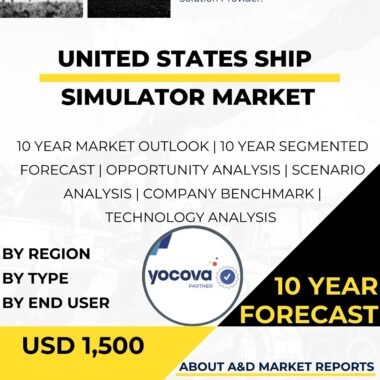Description
The Naval Surface Vessels market in Malaysia has been witnessing significant growth and development in recent years, reflecting the country’s commitment to enhancing its maritime capabilities and bolstering its naval fleet. Naval surface vessels play a crucial role in safeguarding Malaysia’s maritime interests, protecting its territorial waters, and supporting various security and humanitarian missions.
As a maritime nation with an extensive coastline and vast territorial waters, Malaysia faces diverse security challenges, including protecting its maritime borders, countering piracy, combating illegal activities, and conducting maritime surveillance and search and rescue operations. The integration of advanced naval surface vessels into its defense strategy enables the Royal Malaysian Navy (RMN) to maintain a credible and vigilant presence in its maritime domain.
The adoption of modern naval surface vessels offers several significant advantages. These advanced vessels are equipped with state-of-the-art technology, sophisticated sensors, and advanced weaponry, enabling them to operate effectively in complex maritime environments. With advancements in naval architecture and systems integration, surface vessels can achieve higher speeds, increased range, and improved endurance, enhancing their operational capabilities.
Moreover, naval surface vessels can be tailored to meet specific mission requirements, including patrol vessels for maritime surveillance, frigates for anti-submarine warfare (ASW) and anti-surface warfare (ASuW) missions, corvettes for coastal defense, and amphibious assault ships for humanitarian assistance and disaster relief (HADR) operations. This versatility allows the Malaysian Navy to adapt its surface fleet to a wide range of operational scenarios and respond effectively to various threats.
Additionally, naval surface vessels serve as a visible and credible deterrent to potential adversaries, projecting maritime power and reinforcing Malaysia’s sovereignty and territorial integrity. These vessels can conduct presence operations, assert Malaysia’s maritime claims, and demonstrate the country’s commitment to maintaining a stable and secure maritime environment.
The Malaysian government has recognized the importance of international collaborations in acquiring and developing naval surface vessels. Partnerships with leading global shipbuilders and defense companies have facilitated access to cutting-edge surface vessel designs, technology, and expertise. These collaborations have enabled technology transfer and capacity building, contributing to the growth of Malaysia’s domestic naval shipbuilding capabilities.
Furthermore, Malaysia has been actively investing in local research and development (R&D) initiatives to foster indigenous naval surface vessel technologies. By encouraging homegrown innovation, Malaysia aims to achieve self-reliance in naval shipbuilding and strengthen its defense industrial base.
While the Naval Surface Vessels market in Malaysia shows promise, it is not without challenges. One of the primary hurdles is the high cost of developing and acquiring advanced surface vessels. These sophisticated naval platforms require significant investment in research, development, and construction. Budget constraints may impact the pace and scale of surface vessel acquisition and modernization efforts.
Moreover, naval surface vessels must meet stringent safety, environmental, and performance standards. The effectiveness of these vessels largely depends on their reliability, survivability, and ability to perform various mission profiles. Ensuring the safety and operational readiness of naval surface vessels is critical to maintaining maritime security.
Additionally, naval surface vessels require skilled crews and specialized training to operate and maintain their sophisticated systems effectively. The RMN must invest in continuous training and education to ensure its personnel possess the necessary expertise to handle these complex platforms.
Looking ahead, the Naval Surface Vessels market in Malaysia is poised for further growth. The government’s commitment to enhancing its maritime capabilities and adopting advanced technologies will drive continued investments in naval surface vessels. As naval surface vessel designs and technologies continue to evolve, they are likely to play an increasingly pivotal role in Malaysia’s maritime defense and security strategy.
Moreover, Malaysia’s participation in regional security collaborations and joint naval exercises will likely influence its naval surface vessel requirements. As the country seeks to strengthen its position as a key player in regional maritime security and defense cooperation, the demand for advanced surface vessels with interoperability and compatibility with allied forces will increase.
In conclusion, the Naval Surface Vessels market in Malaysia has experienced significant growth and progress. The government’s focus on enhancing its maritime capabilities and investing in advanced naval surface vessels has paved the way for the integration of modern vessels into its naval fleet. International collaborations and domestic research efforts have positioned Malaysia as a participant in the global naval surface vessel landscape.
However, challenges related to budget constraints, technology development, safety standards, crew training, and shipbuilding capacity must be addressed proactively to sustain and enhance the growth of the naval surface vessels market in the years to come. By maintaining a modern and capable surface fleet, Malaysia can effectively enhance its maritime security, protect its territorial waters, and bolster its overall naval defense posture.




